Marketing any product or service requires specific strategies designed to reach a target audience and encourage them to make a purchase.
Selling products on any level is hard at the best of times.
Throw in technology like an eCommerce store and then on top of that SEO (aka “getting found on Google) and the whole thing can become a nightmare before the dream’s even started…
But wait.
There is hope.
Especially if you’ve been told to use WooCommerce as your choice of platform for your eCommerce store.
This guide will not only help you optimise your WooCommerce store so your SEO starts firing on all engines, we’ll give you the whole “shebang”, because we want to tell you everything you need to know for a successful SEO campaign on your WooCommerce site.
In this guide, you'll find:
- Why you should use WooCommerce
- Comparison of WooCommerce to other options,
- Best themes to use
- A WooCommerce SEO optimisation checklist (and advanced strategies)
- Plus much more…
But we're getting ahead of ourselves...let's rewind and start at the beginning.
What is E-Commerce, and Why Should Business Owners Care?
Most experts define e-commerce as selling and purchasing products online.
However, the definition must also include non-physical as well as physical goods and services. If a product or service is marketed online, the business is involved in e-commerce.
Search engine optimisation (SEO) involves enhancing a site’s content and technical configuration to ensure search engines like Google, Yahoo, Bing, and others rank the site higher in their SERPs, or search engine results pages.
If your site isn’t ranking high enough to generate sufficient traffic, improvements are strongly recommended. Most consumers respond to one of the returns listed on the first or second page of those returns. Lower rankings produce little site traffic. Any platform used should be designed so users can easily make changes that directly impact their site’s ranking.
Customers visit online sites to shop for a virtually unending variety of goods and services. When they find the specific item or service they need, shoppers make a purchase using electronic payments. Once the payment is processed, the seller delivers the product or service. While the process sounds simple, the steps required to achieve more sales aren’t always easy.
The trick is to get consumers to your site and convince them you’re the provider they need. That requires careful marketing and a quality website that offers a quick and convenient way to buy a product or service. That’s where WooCommerce fits in.
E-commerce site owners have access to various platforms when building their sites, so finding the one that best fits their needs is crucial. While not every site owner will find WooCommerce ideal, many will.
So with the basics out of the way, let's dive into the full WooCommerce SEO Guide.
Why Use WooCommerce For SEO?
One of the major SEO issues is the complexities involved when using most platforms.
In some instances, the only option is to contract with experts to deal with all phases of SEO.
That’s not always a bad idea, but many business owners want a more hands-on approach to managing their sites.
First, business owners need to understand WooCommerce and why taking advantage of its features is beneficial.
WooCommerce is a free plugin offered by WordPress.
According to a recent industry survey by W3Techs, 43.1% of all websites are powered by WordPress.
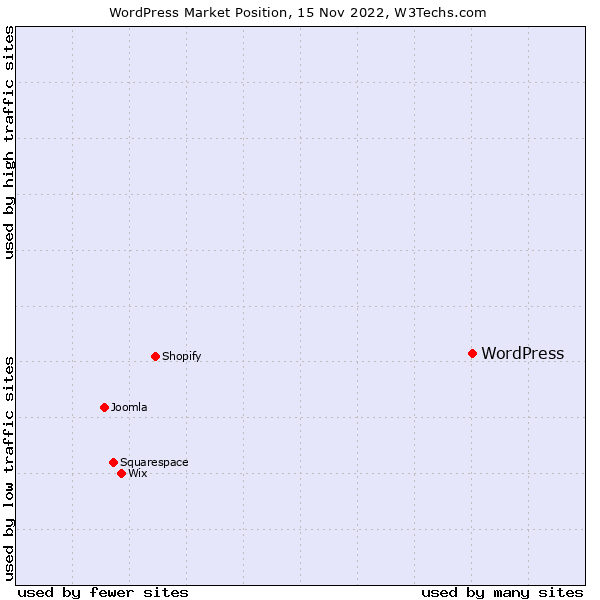
And WooCommerce is the front runner when it comes to most used subcategory of WordPress.
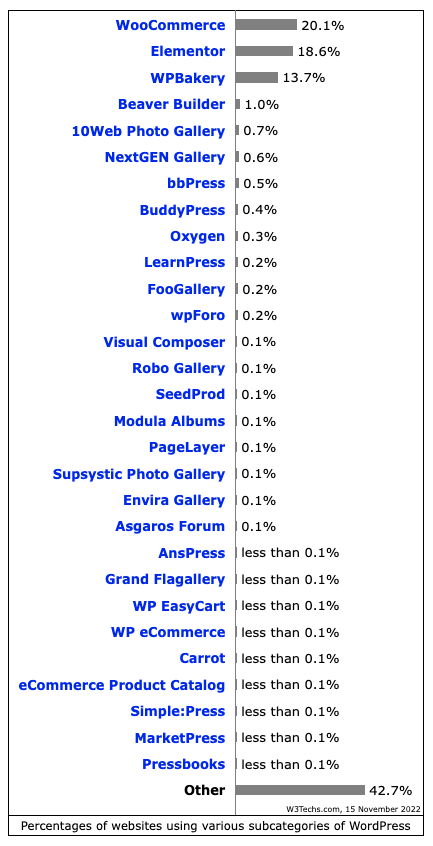
By taking advantage of the hundreds of free and paid extensions currently offered, online store owners can now sell just about anything from anywhere with an internet connection.
So, which benefits can site owners take advantage of when using WooCommerce?
Below are just a few examples.
- Users can provide consumers with product variations, downloads, and different configurations of products and services.
- Owners can use a variety of options designed to customise any site.
- The platform provides various payment and shipping options, making it easier to meet the needs of sellers and consumers.
- Users are able to track their inventory, which means they can place replacement orders before supplies reach dangerously low levels. Keeping better track of inventory levels means customers get products faster without sellers overstocking.
- Finally, using the platform provides users with comprehensive reports designed to keep companies up to date with orders, payments, and site visitor data.
Those attributes simplify SEO efforts, as the data needed to stay abreast of necessary changes and updates is readily available.
Taking appropriate and timely SEO steps goes a long way toward ensuring the site ranks higher on Google and other search engines.
Comparing eCommerce Platforms For Your Site
That brings us to some of the choices site owners have when selecting an e-commerce platform. There are three major platforms available to site owners exploring e-commerce options. WooCommerce is arguably number one when it comes to providing the most benefits for site owners, but Shopify and Magento also offer solid options.
WooCommerce
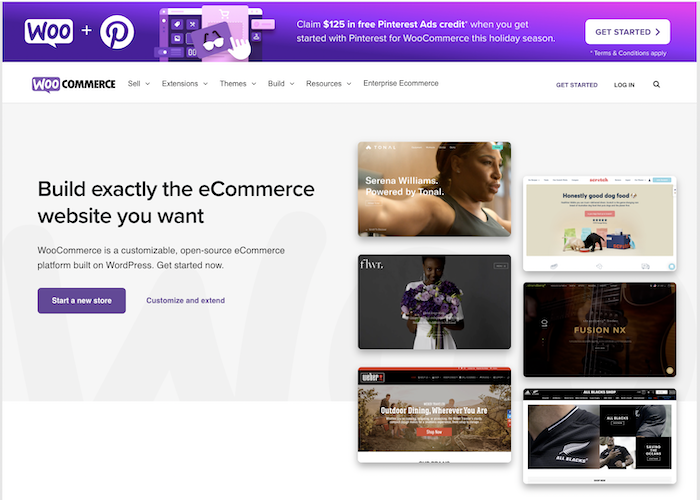
One advantage provided by WooCommerce is that the platform is open source, which means users have unlimited options for modifying the software to meet their marketing goals. The level of flexibility provided is hard to beat, which should excite just about any site owner needing a customisable platform.
While WooCommerce provides advantages larger organisations embrace, the platform proves even more attractive to owners of smaller businesses that don’t want to invest a lot of cash to start selling their products or services online.
Industry experts quickly point out that WooCommerce offers thousands of customisable themes for platform users using various coding options. Configuration tools are also present, which makes setting up, managing, and improving the site simpler.
One issue that routinely plagues site owners is payment gateways. WooCommerce provides multiple options for users, which encourages shoppers to buy more. Here, consider the payment options used by your target demographic and make sure those options are supported by WooCommerce.
However, arguably the most important advantage of WooCommerce is the included SEO features. E-commerce SEO strategies make the site more likely to show up higher in SERPs. Features like keyword optimisation and link building combined with the right eCommerce keyword research strategies & eCommerce link building strategies, are integral additions to the platform and make life easier for site owners who wish to handle at least some of their own SEO.
At the same time, WooCommerce includes a couple of negative aspects. First, not all the extensions are free, which means some costs are involved to make the most of the platform. Second, current users report that using too many plugins or extensions will slow the site’s performance. Since loading time is always important, some functions may have to be sacrificed to ensure the site remains responsive.
Big Commerce

BigCommerce is a frequently selected platform for larger organisations.
Larger organisations benefit from the platform’s scalability, and it’s easy for novice users to navigate. Many larger businesses use the platform because it’s the only option that directly links to the Google Merchant Center. That means those businesses can promote their products on Google Shopping.
Some advantages of BigCommerce include numerous themes costing between $150 and $300 plus a handful of free options. Those fees are relatively low in the overall scheme of things and are not a roadblock for larger organisations. However, smaller sites generally prefer utilising free options whenever possible.
BigCommerce doesn’t include some of the payment options offered by competitors but does include PayPal, which isn’t an option on all platforms. Since shoppers so commonly use PayPal, having it available is a plus. Remember that both WooCommerce and Shopify also offer PayPal payment options.
Site owners who elect to use BigCommerce have different payment plan options depending on their needs. Plans start at $29.95 per month for low-volume users and top out at $299.95 per month for high-volume clients.
Of course, BigCommerce also has a few drawbacks to consider. Both WooCommerce and Magento offer more customization options than BigCommerce. That’s a major concern for some site owners and will almost certainly impact the ease of implementing SEO strategies.
Budgeting is also an issue when using BigCommerce, as the site’s volume determines the fees charged to use the platform. Users of sites like WooCommerce have an advantage here, as that platform is free.
Shopify

The final platform commonly used is Shopify.
Small to medium businesses are the most common users of the framework.
Users are impressed with how easy it is to get up and running when using Shopify. The platform allows minimal users to get up and running quickly and easily, but even users with more requirements report getting online isn’t complicated. At this point, that’s the primary advantage of using Shopify.
Like WooCommerce, Shopify has many add-ons available at the Shopify App Store.
Both free and fee-based themes are offered.
The fee-based options cost anywhere from $140 to $180, which is less expensive than BigCommerce but not as attractive as the free options at WooCommerce.
Shopify also has resident SEO features plus additional options available at the store. That’s an advantage to consider, as e-commerce SEO is crucial for any site’s success. When exploring your options, remember that e-commerce is always evolving, which means any platform selected must also adapt as conditions change.
The costs for using Shopify range from $29 per month for a basic plan to over $2,000 per month for Shopify Plus. Again, the costs depend on the sales volume and the features selected.
Shopify also includes some downsides. One issue is the fact that integrating any third-party solutions will result in extra costs. However, many potential users would say the costs are the top issue with Shopify. Using the platform’s basic options is relatively inexpensive, but the costs go up quickly when add-ons are included.
In addition, the platform is nowhere near as flexible as either WooCommerce or BigCommerce. Not only does that lack of flexibility impact the time and expense required for the initial setup, but it also impacts how easy integrating SEO measures will be.
So, the upshot is that all three platforms have pros and cons to consider when selecting an e-commerce platform. Consider the ease of implementing SEO measures, the costs involved, and the overall flexibility of each platform prior to making a decision. In addition, you may want to read on for more information that might impact your decision-making process.
Read our Full Shopify SEO Guide Here.
Best Theme To Use For WooCommerce SEO
Selecting the best theme to use for WooCommerce SEO is crucial.
However, before getting into any details about the SEO aspect of themes, understanding the components of a successful theme is important.
The design of a site will affect the site’s success, which means increasing the odds of having a profitable site will include several components.
First, the site must be attractive.
Visitors may quickly move on to a competitor’s site if the site isn't attractive. Make sure the layout is clean and orderly, and organize the contents to conform with your industry’s standards.
Next, the theme used must allow SEO measures that enhance its features.
Sites must always load quickly, as most visitors won’t wait for a slow site to appear.
Links must be active and appropriate, and all tags must be correctly worded and in the proper location.
The important thing here is that all search engines will look for these (and other) elements when ranking your site.
Third, the site must be responsive.
In other words, visitors now use various devices to shop online, and if your site isn’t optimised for their use, your ranking will drop, and you’ll lose business.
Finally, update the site frequently to make it more effective.
In some cases, free themes won’t be updated as often, which is a significant drawback. However, fee-based themes may not be updated as frequently as they should. Before deciding on a theme to use, look for a history of regular updates.
Some top-rated themes are Astra, GeneratePress, Ocean WP, Sydney, and Zakra.
However, there are many other options to consider when choosing a theme.
Take the time to explore the benefits of each one to ensure it will meet the needs of your business.
We’re inclined to recommend using Oxygen when building your e-commerce business.
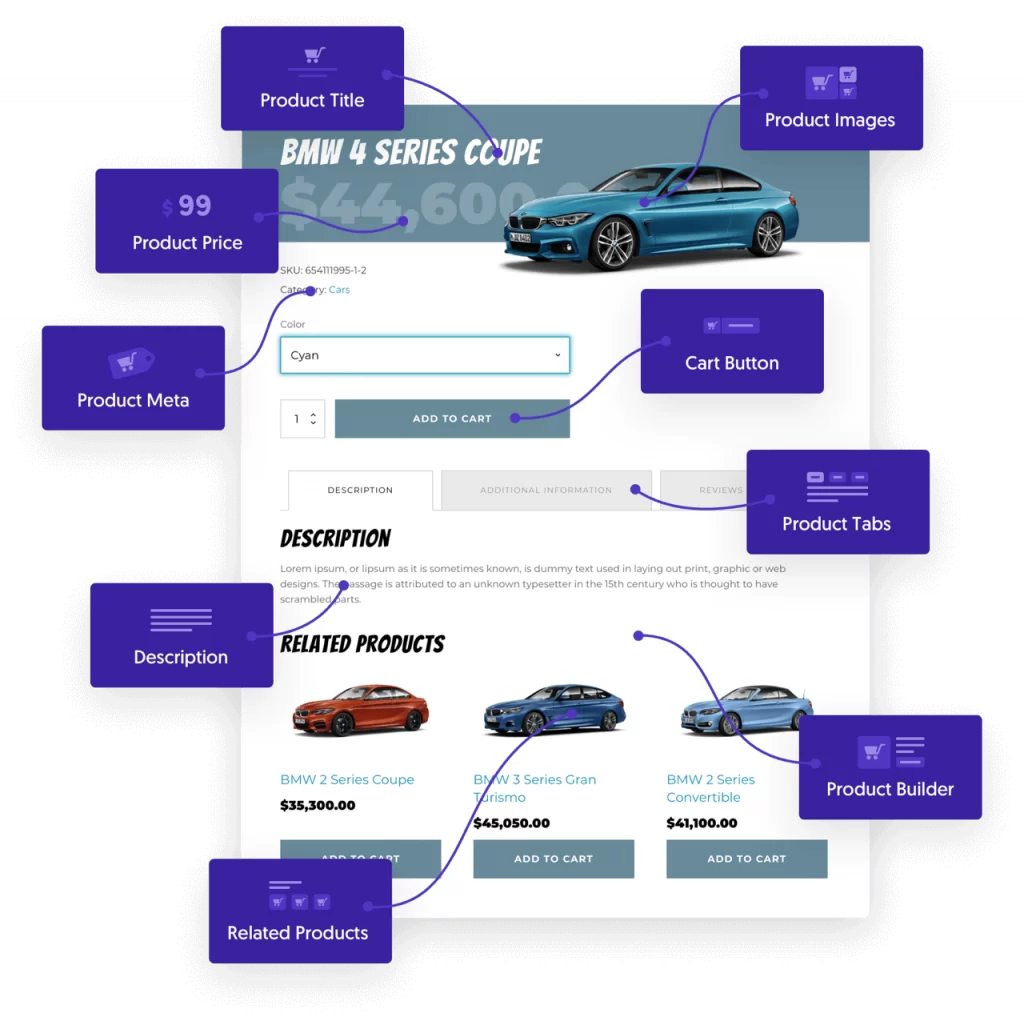
While not a theme, Oxygen provides many of the same benefits and more for your WooCommerce site.
With over 20 configurable WooCommerce elements, Oxygen allows owners to create about anything they need to make their site highly competitive in today’s hyperactive market.
Note that implementing an actual theme will require additional work, but using Oxygen provides site owners with an exceptionally powerful visual builder for WooCommerce.
The end result is well worth the investment.
When using Oxygen, highlight your products or services in any order you want, focus on individual products, and include comprehensive cart and checkout pages. Include breadcrumbs, rating options, and other features to make your site work for your product niche. Site owners drag and drop all site elements to create the image they’re seeking.
At the same time, the cost is well within reason.
The Basic Plan’s one-time cost is $129 while the Ultimate Plan is only $149.
When you look at the benefits, the Ultimate Plan is definitely the better option.
Always remember that SEO is crucial when building a WooCommerce site, and Oxygen’s features make the process simpler and faster.
Here are just a few of the built-in SEO benefits in Oxygen.
- The platform makes it easy for bots to understand your site’s content. This is a crucial element of SEO, and it directly and dramatically impacts your site’s SERPs.
- Faster loading speeds boost your rankings. All search engines are now using complicated algorithms when ranking sites, which means your site must load quickly to achieve a higher ranking.
- Oxygen’s coding ensures your site will load quickly.
- Oxygen works with any WordPress SEO plugin. Enhance your site’s ranking by making the best use of plugins designed to work with WooCommerce.
Since every site tends to have a few unique requirements, taking advantage of a flexible platform is crucial.
Oxygen doesn’t limit any of the inherent flexibilities offered by WooCommerce, so you’re always able to build a great site that works.
Basic On-Page SEO Checklist To Get Right With Your WooCommerce Site
Paying close attention to SEO goes a long way toward ensuring more potential buyers see your site. Here are the crucial steps you’ll need to take to maximise the odds of boosting your site’s ranking and, as a result, the number of visitors and buyers.
Indexation
Ensure your WordPress installation is indexable.
Go to Settings >> Reading section and make sure that Search Engine Visibility is not checked.

Allowing your site to be indexed is a key component of achieving the ranking needed in the SERPs.
Optimise Permalinks
Optimise Permalinks to reflect the post’s name: (/%postname%/).

The URL structure of your site is crucial and makes it possible for search engines and visitors to see your site.
Optimise Category & URL Structures
Optimise the Category and Product URL structure.
Doing so allows search engines to better determine when to list your site after a shopper enters their search.
The preferred structure is domain.com/shop/category-name/product-name.

Read our full eCommerce category optimisation guide here.
Optimise Title Tags, Meta Descriptions & Slugs
Optimise title tags, meta descriptions, and slugs on product and category pages. This allows search engines and visitors to understand what’s included on each page of a site.
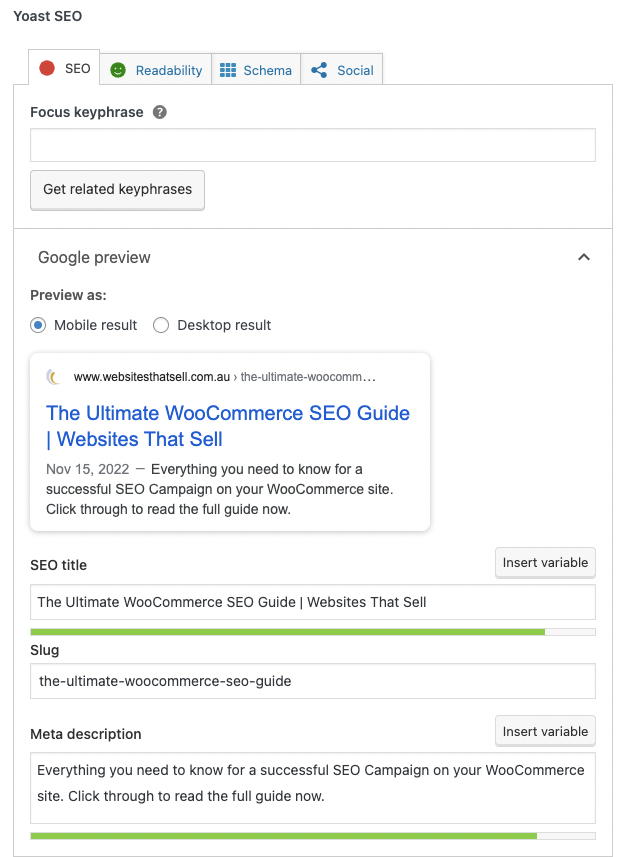
Here, you can use WordPress plugins like Yoast, RankMath or AllInOneSEO.
And use our On-page SEO Strategies for eCommerce guide to get best results.
Optimise Social Media Metadata
Optimise social media metadata. Social media sites are used routinely by shoppers to locate products and services.
Take whatever steps are needed to ensure social media sites pull accurate information for your site.
YOAST (free version) does a great job at this
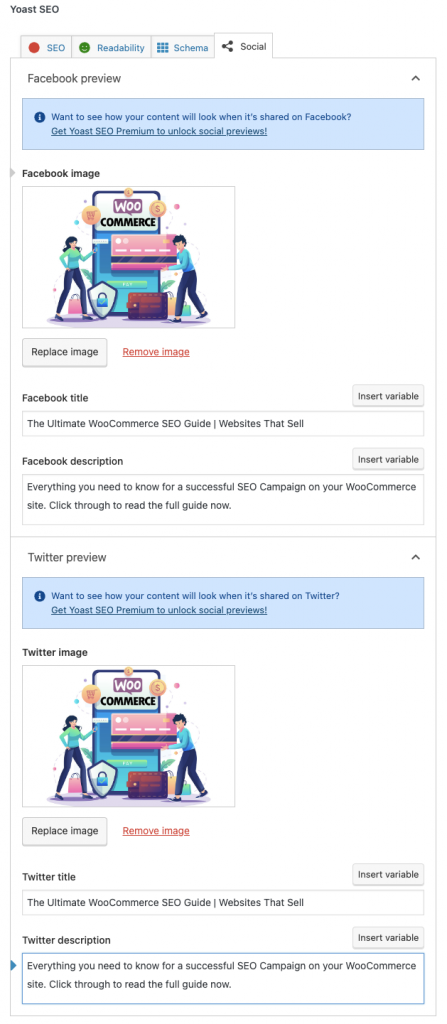
Optimise Images
Optimise the images on your site. Image sizes directly impact a site’s overall performance. Formatting, sizing, and resolution all matter. Proper labelling (alt text) is also crucial to ensure search engines can effectively crawl the site.

Enable Product Reviews
Enable product reviews.
Search engines look for this feature when ranking a site and display is in the serps like this:

Reviews also result in some great responses that can boost your sales.
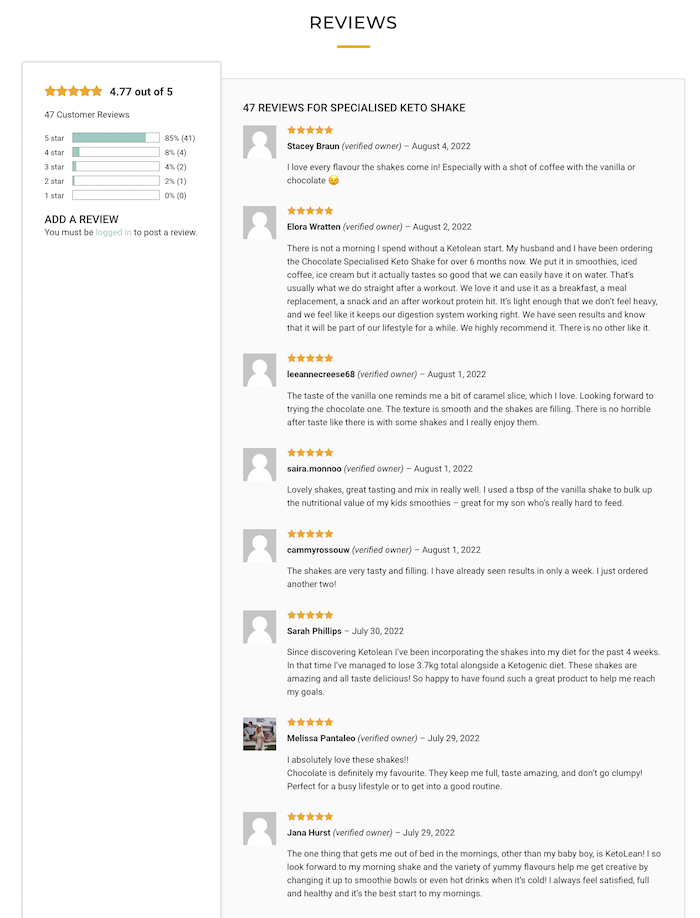
To enable reviews, go to WooCommerce >> Settings >> Products.
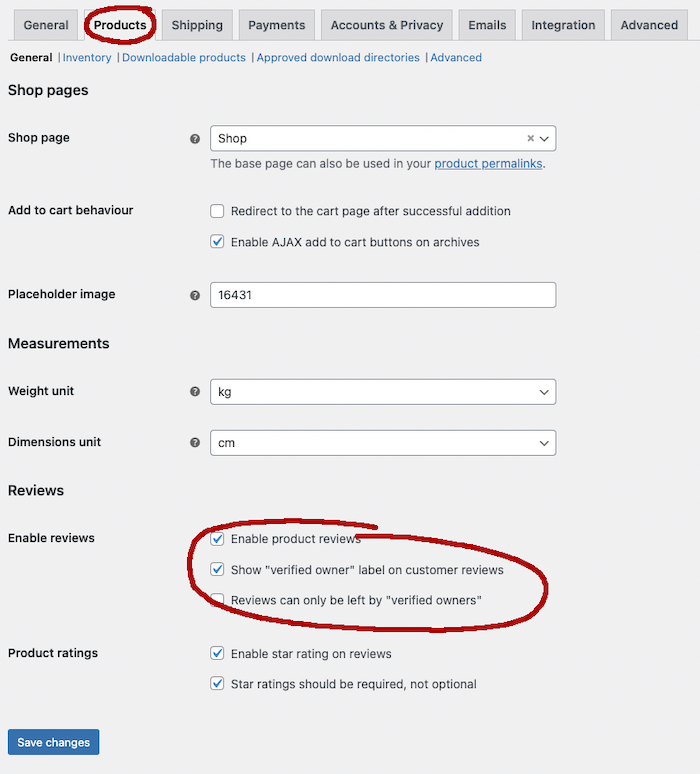
Interlinking
Take advantage of interlink-related products for internal linking.
When you add new products, link back to that product page from an old page to ensure the crawlers find it.
NOTE: that's a nice little advanced SEO strategy, you can learn a heap more Product Page SEO strategies in our product page SEO guide.
Also, consider adding a “Related Products” section to help site visitors find the various products or services you’re offering.
Go to the Link Wisper plugin for help adding links.
Enable Breadcrumbs
Enable breadcrumbs.
Breadcrumbs are the navigational links at the top of your product pages.
They provide yet another way for site visitors to find what they’re looking for as well as related products on your site.

HTTPS Secure Site
Set up https to improve WooCommerce security and make the site compliant.
Since Google and the other search engines expect top-rated sites to be secure, protect your site visitors from scams, phishing, and malware.
Use the WordPress security plugins to ensure you’re doing everything possible to protect your site and visitors.
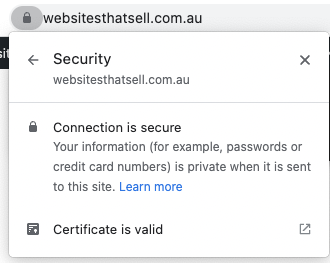
Avoid Duplicate Content
Avoid duplicate content problems.
Use the rel=”Canonical” tag to let Google know which page is the canonical version.
Otherwise, Google will decide which page to view as the canonical one.
That may not be helpful for your rankings.
Mobile Optimisation
Optimise the site for mobile traffic.
Today, shoppers use mobile devices more than desktop ones.
That means your site must be optimised for mobile phones and tablets to avoid missing out on sale opportunities.
In addition, Google now requires optimisation for mobile devices to be ranked at or near the top of SERPs.

SEO Tracking
Set up Google Analytics and Google Search Console. Tracking your site’s performance is critical, as doing so is the only to determine how and where to make improvements.
Understanding your visitors’ behaviours will improve conversion rates.
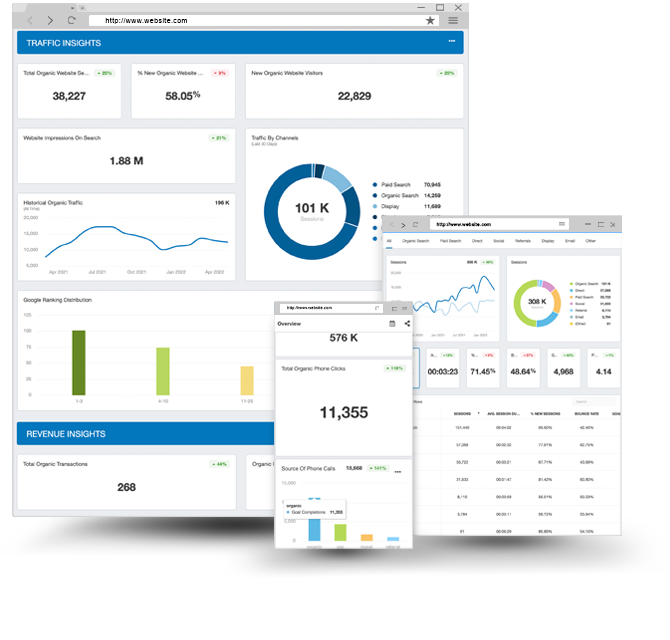
XML Sitemap Set Up
Create an XML sitemap and submit it to Google Search Console.
Having up-to-date site data helps the search engines crawl the site. In turn, that ability enhances your site ranking.
Advanced Technical SEO On WooCommerce
While taking care of the basics is always important, site owners are always encouraged to take additional SEO steps to ensure their site ranks as high as possible in the SERPs.
Here are a few additional SEO steps to consider:
- Log file analysis in WooCommerce
Log file analysis allows the site owner to track the crawling behaviour of the search engines to determine where improvements are needed.
- Robots.txt optimisation in WooCommerce
Robot.txt files tell search engines how to crawl a specific website. That makes the function an extremely powerful SEO tool for WordPress files of all kinds.
- Minify CSS in WooCommerce
Minifying is a strategy used to make your website files smaller. It eliminates unnecessary characters from the code. Smaller files load faster, which means customers will see your site sooner and, just as importantly, Google will love it.
- Fix broken links and crawl errors
Broken links and crawl errors are taken seriously by search engines. Verify the parameters in robots.txt and meta tags, and make sure you’re using rel=canonical.
- Optimise international hreflang
If you’re running an international store, hreflangs are routinely used to organise content when different languages are involved.
As with all SEO activities, strategies must be customised to meet each site’s requirements.
- Easy blog posting for supporting content clusters
Google doesn't just look at one page anymore… you need to have proper content on your entire site that builds theme relevance for your products & categories. Having a blogging platform built right into your platform helps with this immensely. Check out our full Blogging Guide For eCommerce here.
WooCommerce Functionality
E-commerce sites are all intended to sell products and services to clients. However, some sites function better than others.
WooCommerce offers a lot of options to help site owners and shoppers enjoy a better experience.
If you’re choosing a platform for e-commerce, focus on the following factors.
Store Management
Besides the resident options, look at the available extensions available.
For example, QuickBooks, Square, and other extensions make life easier for site owners.
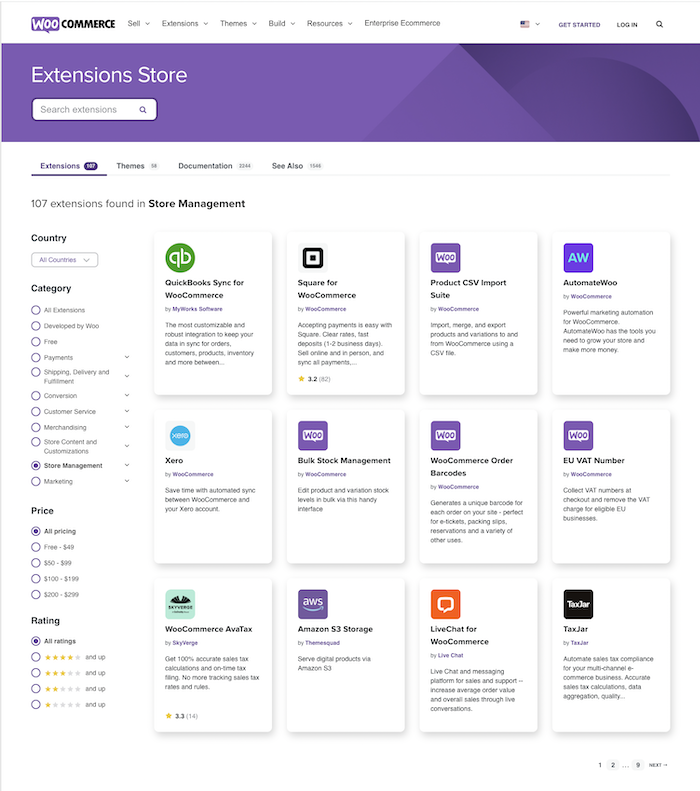
Sales and Marketing
Store owners reach their audience using a variety of tools.
Facebook ads are commonly used to reach certain demographic groups.
However, you can also use Google listings and ads to connect with countless shoppers.
You can also harness the power of third-party marketplaces by using Pinterest, eBay, Amazon, and other popular platforms.
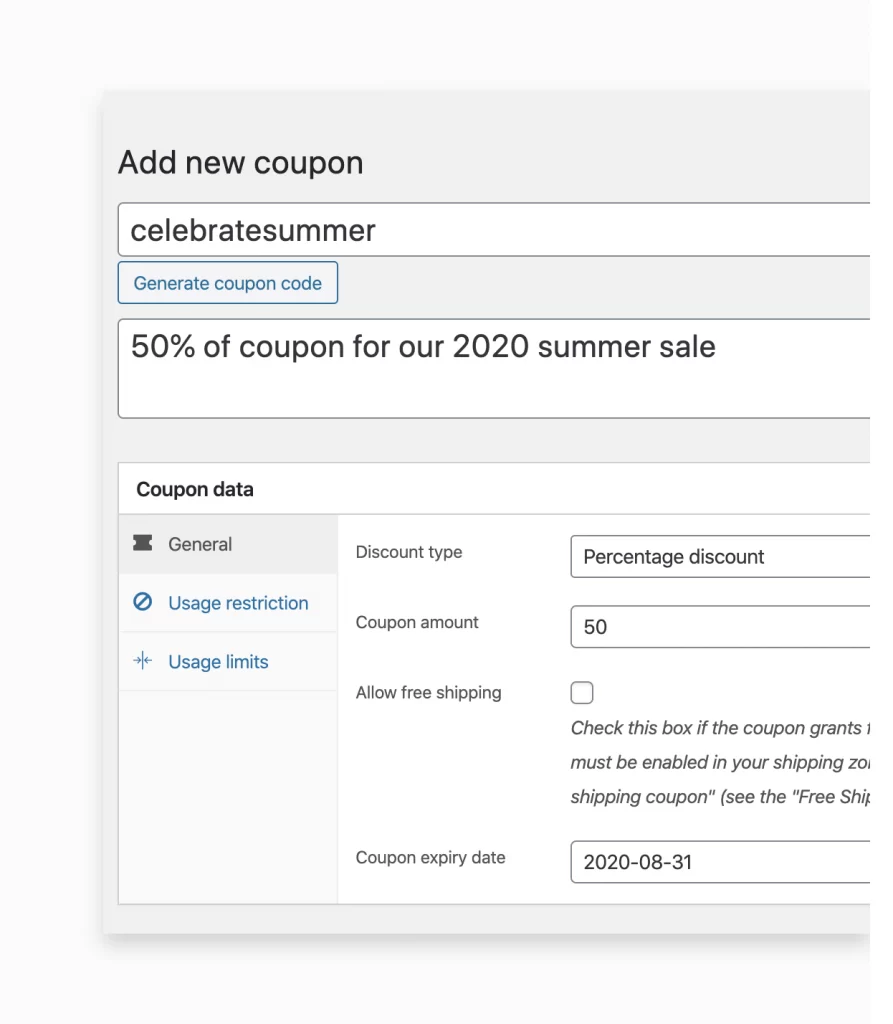
Customer Shopping Experience
If shoppers are put off by elements of your site, they will quickly migrate to a competitor’s site.
WooCommerce provides options to enhance the organisation and functionality of your e-commerce site.
From casual browsing to checking out, customers will have a seamless, comfortable experience.

WooCommerce is a powerful platform designed to make the creation and maintenance of your e-commerce site easier and more productive.
How to Decide if WooCommerce is Right for Your Business and SEO Campaign
Some decisions are easier to make than others.
In this instance, deciding whether WooCommerce is the right option for building your e-commerce site shouldn’t be overly difficult.
As a rule, WooCommerce is an excellent option for most small and mid-size businesses.
Of course, if you’re unsure, take the time now to ask an expert for advice.
Learn more about our eCommerce SEO services and how we can help you rank your WooCommerce site.
WooCommerce Support Options
Regardless of how carefully a platform is designed, users may experience issues they need help with.
If you’re experiencing issues with WordPress or WooCommerce, we can help.
You can reach out to our developers right now on the phone at 1300 974 367 or get in touch with us via our contact page.
Our developers all work in-house here in Australia… you’ll literally be able to talk to them on the phone and ask questions!!!
Crazy, right - we think so, and it’s why we’ve helped a tonne of eCommerce site owners with their WooCommerce set-up and helping them also with their SEO and getting found on Google.
If your concerns are more related to WooCommerce products specifically, you can go straight to the source and contact WooCommerce directly using their support pages.
